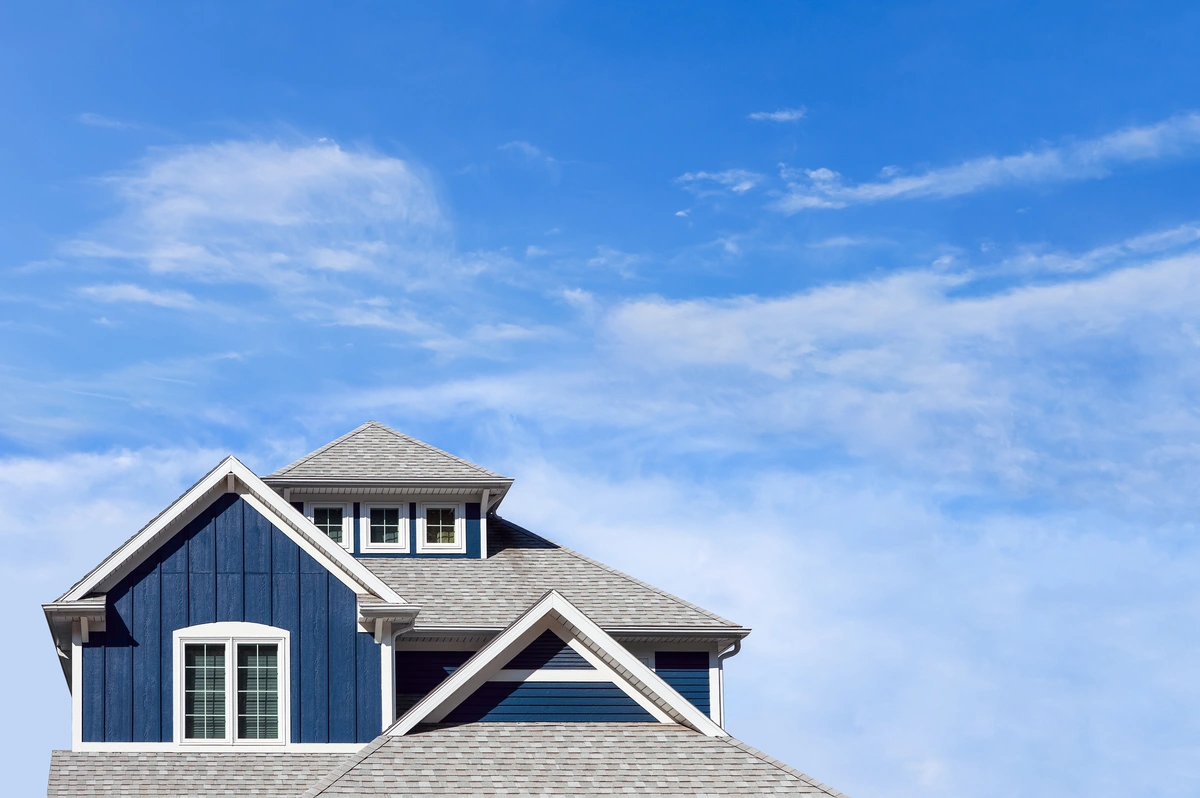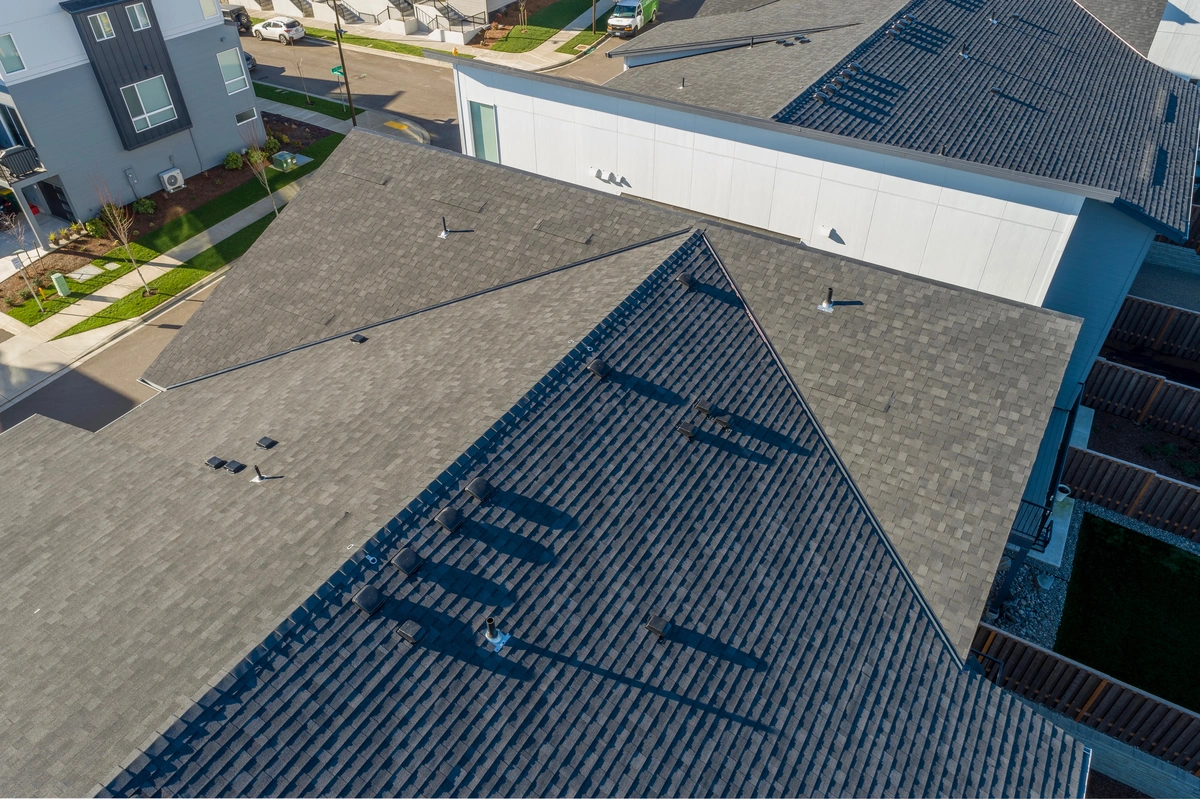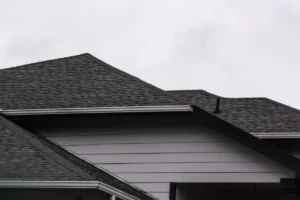When it comes to protecting your home from the elements, few things are as crucial as a sturdy roof. In the realm of roofing materials, composite roof shingles have emerged as a popular choice for homeowners seeking durability, affordability, and aesthetic appeal.
In today’s blog, we’ll explore everything you need to know about composite roof shingles, including:
- What composite roof shingles are
- Their advantages and disadvantages
- Their cost and lifespan
- Maintenance requirements
- Why they stand out as a superior option compared to other roofing materials
What Are Composite Roof Shingles?
Composite roof shingles, also known as asphalt shingles, are a type of roofing material made from a combination of asphalt, fiberglass, and mineral granules. These shingles are designed to mimic the appearance of traditional materials like wood or slate, offering a versatile and cost-effective alternative.
✅ Pros of Composite Roof Shingles:
- Affordability: One of the primary advantages of composite roof shingles is their affordability. Compared to materials like slate or clay tiles, composite shingles are much more budget-friendly, making them an attractive option for homeowners on a tight budget.
- Variety of Styles: Composite shingles come in a wide range of styles, colors, and textures, allowing homeowners to choose a look that complements their home’s architecture and aesthetic preferences. Whether you prefer the rustic charm of cedar shake or the sleek appearance of slate, there’s a composite shingle option to suit every taste.
- Durability: Despite their lower cost, composite roof shingles are remarkably durable and can withstand harsh weather conditions, including strong winds, heavy rain, and snow. Many manufacturers offer warranties of up to 30 years or more, providing peace of mind for homeowners worried about the longevity of their roof.
- Easy Installation: Composite shingles are relatively lightweight compared to other roofing materials, making them easier and cheaper to install. Additionally, most roofing contractors are familiar with composite shingle installation techniques, further reducing labor costs and installation time.
❌ Cons of Composite Roof Shingles:
- Lifespan: While composite shingles offer respectable durability, they typically have a shorter lifespan compared to premium roofing materials like slate or metal. On average, composite shingles last between 20 to 30 years, depending on factors such as climate, maintenance, and installation quality.
- Susceptibility to Algae and Moss Growth: Composite shingles are prone to algae and moss growth, especially in humid climates or areas with limited sunlight. While not necessarily a structural issue, algae and moss can detract from the appearance of the roof and require periodic cleaning to maintain curb appeal.
- Environmental Impact: While composite shingles are recyclable, the production process involves the use of fossil fuels and other non-renewable resources. Additionally, old shingles often end up in landfills, contributing to environmental waste. However, some manufacturers are working to develop more eco-friendly alternatives with recycled materials.
Cost of Composite Roof Shingles
The cost of composite roof shingles varies depending on factors such as material quality, brand, and installation complexity. On average, homeowners can expect to pay between $100 to $200 per square (100 square feet) for materials, with installation costs ranging from $200 to $400 per square.
While composite shingles are more affordable than premium materials like slate or metal, they still offer excellent value for money considering their durability and longevity.
Lifespan of Composite Roof Shingles
As mentioned earlier, composite roof shingles typically last between 20 to 30 years with proper maintenance and installation. However, factors such as climate, exposure to sunlight, and maintenance practices can influence the lifespan of the roof. Regular inspections and repairs can help prolong the life of composite shingles and ensure optimal performance.
5 Maintenance Tips
Maintaining composite roof shingles is relatively straightforward and can help extend the lifespan of the roof. Here are some essential maintenance tasks to keep in mind:
1) Regular Inspections:
Conduct visual inspections of the roof at least twice a year to check for signs of damage, such as missing or damaged shingles, cracks, or leaks.
2) Clean Gutters and Downspouts:
Clogged gutters and downspouts can lead to water damage and premature deterioration of the roof. Clean them regularly to ensure proper drainage and prevent water buildup.
3) Remove Debris:
Clear away leaves, branches, and other debris that accumulate on the roof, as they can trap moisture and promote algae and moss growth.
4) Trim Overhanging Branches:
Trim back tree branches that hang over the roof to prevent damage from falling limbs and excessive shade, which can promote algae growth.
5) Professional Inspections:
Schedule regular inspections by a qualified roofing contractor to identify and address any issues before they escalate into costly repairs.
Why Choose Composite Roof Shingles?
Composite roof shingles offer a compelling combination of affordability, durability, and aesthetic appeal, making them an excellent choice for homeowners seeking a reliable and cost-effective roofing solution. While they may not have the longevity of premium materials like slate or metal, composite shingles provide reliable protection for decades at a fraction of the cost.
Additionally, the wide variety of styles and colors available allows homeowners to customize their roof to suit their individual preferences and enhance the curb appeal of their home. With proper maintenance and care, composite roof shingles can provide reliable protection and peace of mind for years to come, making them a smart investment for any homeowner.
Ready to make the switch to a composite shingle roof? Contact Trojan Roofing!



